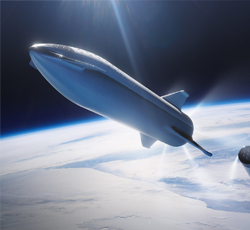
Explosives topple ULA launch complex towers to make room for SpaceX Starships at Cape Canaveral
- by Detroit Free Press
- Jun 13, 2025
- 0 Comments
- 0 Likes Flag 0 Of 5

Need a break? Play the USA TODAY Daily Crossword Puzzle.
Now, SpaceX awaits key environmental and regulatory approvals from the U.S. Air Force and Federal Aviation Administration to start launching Starships from the complex. A 176-page Air Force draft environmental impact statement spells out proposed new infrastructure at LC-37:
Two integration towers, each measuring about 600 feet tall.
Two concrete launch pads about 400 feet long by 400 feet wide.
Two concrete landing pads, each measuring about 225 feet in diameter, with two Super Heavy first-stage-booster catch towers. These will stack up similar in size to the integration towers.
Flame trenches and diverters to reduce acoustic and thermal energy during launches and landings.
Utilities, propellant tanks, staging and storage buildings, water storage and stormwater ponds, lighting and other improvements.
In addition, SpaceX would widen about seven miles of Phillips Parkway. Roughly four miles of this stretch lie on the Space Force installation, while the other three are on NASA's adjacent Kennedy Space Center. Crews would also widen and improve about one mile of Old State Road A1A.
ULA's lease of LC-37 expired after that April 2024 Delta IV Heavy launch, and infrastructure at the launch site was turned over to the Air Force, said Emre Kelly, Space Launch Delta 45 media operations chief.
"The (Air Force) does not intend to make a future leasing decision on SLC-37 until the Starship Environmental Impact Statement is complete and Record of Decision has been published," Kelly said in an email.
History of Launch Complex 37
Launch Complex 37 construction wrapped up in August 1963, three months before President John F. Kennedy was assassinated in Dallas. Six Saturn I and two Saturn IB rockets launched there during the 1960s before NASA deactivated and mothballed the complex by November 1971, according to the Cape Canaveral Space Force Museum.
After lying dormant for more than two decades, crews built new infrastructure at the complex and the first Delta IV launched in November 2002.
“I have great feelings of nostalgia for that pad. I was fortunate enough to capture several Delta Medium and Delta Heavy launches from that pad. The Delta rockets were just beautiful to photograph," Indialantic space photographer Michael Seeley said after capturing demolition video and images.
"And so, watching it topple, I was reminded of that. And I’m reminded that, with change comes opportunity. I’m interested to see what comes next,” Seeley said.
Please first to comment
Related Post
Stay Connected
Tweets by elonmuskTo get the latest tweets please make sure you are logged in on X on this browser.






 Energy
Energy


















